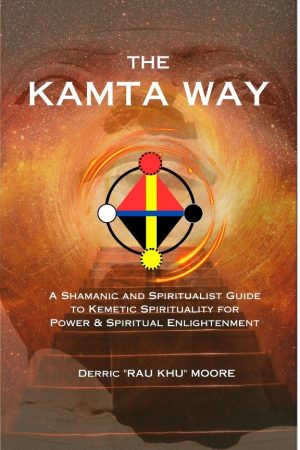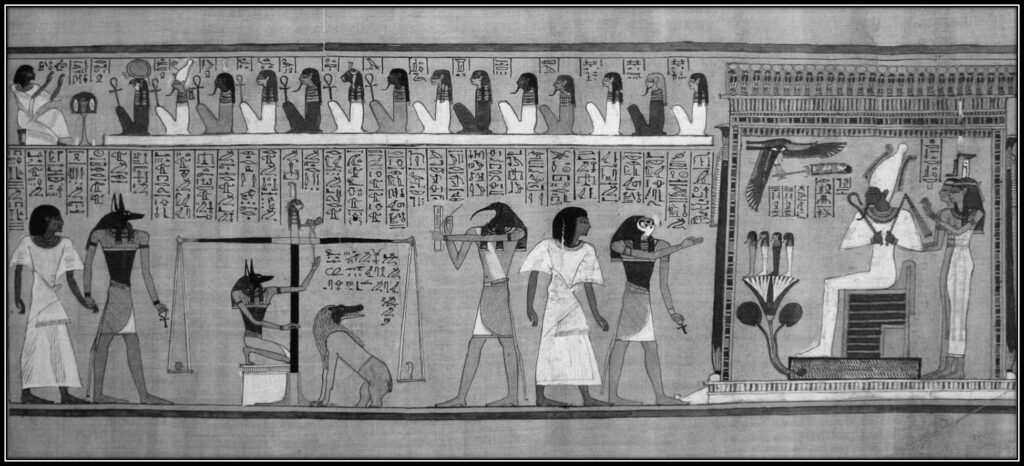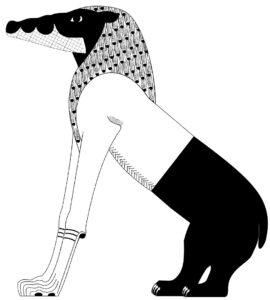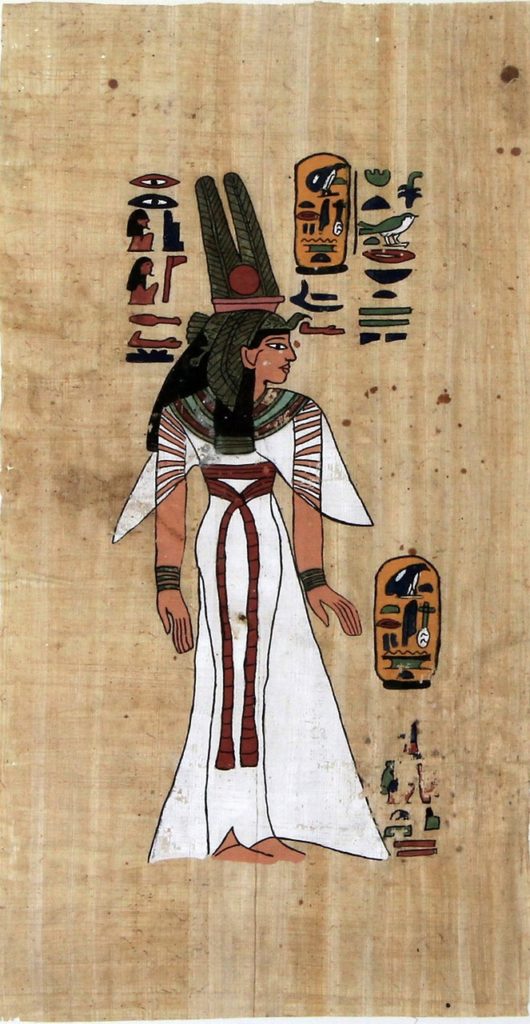The Kamta Way:
A Shamanic and Spiritualist Guide to Kemetic Spirituality for Power & Spiritual Enlightenment

Ancient Egyptian or Kemetic spirituality is no joke! It really worked when Derric “Rau Khu” Moore applied it from a shamanistic and spiritualist perspective. He could harness the wisdom of his Kongo ancestors to discover a Kemetic adaptation of the dikenga dia Kongo (Kongo Cross), which helped him improve his health and prosperity. Kemetic Spirituality delivers quick fixes and desired results for spiritual growth when adopted as a way of life, hence the Kamta Way.
In this book, you will discover how to:
Tap into the Divine Consciousness and use the Divine Power to do manifestation magick, protection magick, and repelling magick.
Discover how to communicate with your ancestors and spirit guides, and use their wisdom to make strategic moves in your life.
Build altars for your ancestors and guardian spirits based on your biological family history and cultural perspective.
Effectively use the 42 Laws of Maa(t) for spiritual development.
Learn how to use divination tools, signs, and omens to determine future events.
Change situations, events, and people using candles, coins, and other effigies.
And much, much more.
Book Excerpt
Book excerpt from page 143 of The Kamta Way.
What are Gods?
Since time immemorial humans have believed in the existence of spiritual beings. Over time humans have called these spirits beings everything from angels to deities, gods, goddesses, and daemons. But what are they, and why do they exist?
Most non-Western cultures see these spiritual beings as entities they need to develop a partnership with through awe, but not in the West. A relationship is discouraged between humans and angels in the West because there is a gross misunderstanding about these spiritual beings due to a lack of self-knowledge. So, we must recall that according to Genesis 1:26, which states:
And God said, let us make man in our image, after our likeness: and let them have dominion over the fish of the sea, and over the fowl of the air, and over the cattle, and over the earth, and over every creeping thing that creepeth upon the earth.
The biblical passage clearly states that man and woman are supposed to be gods and goddesses because we are the only beings that were created in the image of God. This is a point that I keep repeating throughout this book because it is relevant to our salvation. For a lot of people this statement is very controversial, but the biblical text is clear and other examples can be found throughout the Bible. Such as in Psalms 82:6-7, which states:
I have said, Ye are gods; and all of you are children of the most High. But ye shall die like men, and fall like one of the princes.
Part of the reason man and woman’s divinity is so debated is because many believe that we were created under the angels because of sloppy translation. For instance, in Psalms 8:4-5 which reads according to the King James Version of the Bible:
What is man, that thou art mindful of him? And the son of man, that thou visitest him? For thou have made him a little lower than the angels and has crowned him with glory and honor.
But, according to Strong’s Exhaustive Concordance of the Bible, it is Elohim in Hebrew everywhere you see the word God in the Old Testament. In fact, the word Elohim is used around 2,250 times throughout the Old Testament, and what’s even more interesting about the word Elohim is that it is used in place of the word “angels” and “gods” because Elohim is plural for Eloah. Still, the name of God in the Hebrew language is Yahweh. This means the actual translation of Psalms 8:4-5 should read as in the New American Standard Bible:
What is man, that Thou dost take thought of him? And the son of man, that Thou dost care for him? Yet Thou hast made him a little lower than God and dost crown him with glory and majesty!
Man and woman weren’t created lower than the angels. We were created under God and in God’s image, which means the angels were created to serve us. This misunderstanding about man and woman’s divinity and our connection to God caused the translators of the Bible to sidestep their translations because they didn’t understand what they were reading. They were basing their understanding of the spiritual truths in the Bible upon their sahu. Therefore, in Hebrew 1:14 it asks:
Are they not all ministering spirits, sent forth to minister for them who shall be heirs of salvation?
When it should be more like a statement as presented in the New Living Translation of Hebrews that affirms:
Therefore, angels are only servants–spirits sent to care for people who will inherit salvation.
Once it is understood that we are made in the image of God and that the angels (and other spiritual beings) were created to serve us, and not the other way around, we see that the reason we have so many problems regarding our salvation is that many of us are worshipping entities that were intended to serve us. The issue of worshipping entities brings us to ask why and how this happened. We need to know how these beings were made to understand how this happened and how to fix it.
Book excerpt from page 146 of The Kamta Way.
How Were the Gods Made?
There are many theories about how spiritual beings (angels, deities, gods, goddesses, daemons, entities, spirits, etc.) were created. Some believe that God created them to assist in creating the Universe. Others believe these spiritual beings existed after God self-created Itself. Before telling you about my theory on how these beings were created, I want to tell you a story that helped me understand what these beings are and help you draw your conclusion. This story is about the author Napoleon Hill, the author of the best-selling book Think & Grow Rich.
For those of you who do not know who Mr. Hill is, he is one of the founders of the personal-success writings of today. Hill was born to a very low-income family in the Appalachian Mountains of Southwest Virginia. When he was a teenager, he became a reporter for one of the small-town newspapers and saved his earnings to attend college, but due to financial reasons had to withdraw. Then a pivotal moment in his life occurred around 1908 when he met Andrew Carnegie, considered one of the world’s wealthiest men, who gave Hill an exciting assignment. It was to outline a formula for success by interviewing the most famous and wealthiest people of the time, like automaker Henry Ford, Thomas Edison, Alexander Graham Bell, and many others. After doing so, Hill was encouraged to implement the theories he learned from these affluent individuals to ensure they worked. Hill applied what he learned from these interviews, leading to him writing his most famous book, which has been reprinted several times in several languages called Think and Grow Rich.
Hill discovered a lot of exciting ways that helped him to achieve success. One of the fascinating methods he discussed in Think and Grow Rich was how he would fall asleep and meet with famous men whose attributes and qualities he admired and ask these men in his imagination to teach him how to incorporate these attributes into his daily living. Hill called these men he met with the (Nine) Invisible Counselors. Hill stated that after several months of doing this, he noticed that these characters would become more and more real. He says that although he knew these men existed solely in his mind as puppets of his imagination. Each counselor had evolved to the point that they took on their personalities and engaged in dialogue with each other. These counselors had become so real that Hill said he had to abstain from using them at times to remind himself that they were a product of his imagination. However, when he continued using them, Hill claims that these counselors guided him through emergencies and helped him with every difficult problem he and his clients faced.
What Hill created with his imagination is what is called a thought form. A thought form is an energetic, non-corporeal “beings” created from our thoughts and emotions. Thought forms have been called numerous names, including entity, familiars, familiar spirits, egregores, and tulpas. Although some may disagree, every deity, angel, saint, archetype, ancestor, spirit guide, animal guide, totem spirit, ascended master, god-form, etc., is a thought form created to assist us. However, as you have discovered, the problem is that many of these thought forms are being worshipped because people forgot that they created them. To understand how these spirits were created we must understand what happens after death.
Book excerpt from page 147 of The Kamta Way.
Why Were the Gods Made?
As we read in the previous section, spiritual beings were created to serve humans, and humans are the ones responsible for creating spiritual beings. The next question that comes to mind is how the gods were made.
The best way to understand how the gods were made is to understand what happens in the afterlife. Before we discuss the afterlife, a few misconceptions need to be addressed.
The first misconception is that the Kemetic people were fascinated with death. A proper understanding of Kemetic spirituality reveals that the Kemetic people were not fascinated with death but were enthralled by the afterlife. The Kemetic people believed that the physical realm or life was an illusional prison because they were restricted from physically exercising their divinity. From the Kemetic perspective, true peace, happiness, success, prosperity, power, etc., could not be obtained from the physical realm because the physical realm was an illusion, which people call today, Maya. The spiritual realm or the “heavens” was viewed as their real home, so the Kemetic sages gave special attention to understanding what occurred in the afterlife in hopes of returning. The Kemetic sages’ thinking was that if they knew what happened in the afterlife. They could prepare for it in their physical life.
The second misconception is the belief in heaven and hell. Heaven and hell are mythological places that were created to symbolize a type of energy. Metaphysically speaking, heaven as a place of reward and hell as a place of punishment cannot exist in the spiritual realm because spirits cannot physically smell, touch, see, hear, or taste. In other words, when the deceased transitions to the spiritual realm, they lose all their physical senses, which makes it impossible to experience a reward or punishment. Once the nature of a spirit is understood, it will become clear that heaven and hell are concepts meant to express a type of energy. For instance, the fiery lake of hell image was created to convey to the reader the idea of torment in the afterlife.
The last and most common misconception about the afterlife is the belief that demonic creatures are conspiring to steal souls. This misconception owes its popularity to the horror film industry, which has made millions of dollars promoting this junk. Spiritually speaking, no demonic and hellish creatures are conspiring to steal your soul. The idea of a demonic being was an image that was created to symbolize your fears, guilts, inhibitions, etc., or inner demons, which are typically suppressed and never adequately addressed.
This brings us to the question, why were spiritual beings made? We can find the answer to this question in the Kemetic Judgement scene, but before answering. It is important to remember that the Kemetic sages did not depict men and women with the heads of animals because they worshipped animals. But rather because the Kemetic people understood that the powers of the Divine were reflected in animals. For instance, the dog-headed man Npu was depicted wearing a dog head to indicate that Npu was clever, protective, watchful, astute, etc., like most canines.

In the Weighing of the Heart illustration above, we see the Scribe Ani being led to the Hall of Truth by the dog-headed man Npu. Once he arrives, his Ab (the spiritual heart) is weighed against the ostrich feather of Maat by Npu (Anubis) while the Aummit monster, which is part crocodile, lion, hippopotamus, etc., looks on. While the Ab is weighed, the ibis headed Djahuti records the entire event. After weighing the Ab, Hru leads the Scribe Ani before Osar. Now, many people have interpreted the Judgement scene as if the Ab is heavier than the feather. Then the Aummit monster will consume the Ab, but if the Ab is found to be lighter than the feather. The scribe Ani is allowed to proceed further in his journey.
But the Kemetic people did not believe that there was an actual monster that would devour their souls if their hearts were heavier than the feather of Maa. They also didn’t believe that there were dog-headed, hawk-headed, and ibis-headed men responsible for the salvation. The Aummit monster symbolizes our animalistic nature, lower self, or ego, which is why Aummit is an amalgamation of different animal parts. The Aummit monster devouring the Ab represents the spiritual heart consumed by our lower nature or ego. If an individual’s Ab were heavier than the feather, then Aummit would eat their Ab so that they would have to return to the land of the living and repeat the process. Npu, Hru, and Djahuti symbolize higher levels of consciousness respectfully.

In the Npu, Hru, and Djahuti’s role, we see that spiritual beings were created to guide us in the spiritual realm so that we can live righteously. In other words, spiritual beings were created to assist us because they were not restricted or limited by their physical form.
Who are these spiritual beings? Since these spiritual beings were created based upon the Kemetic peoples’ fascination with the afterlife, these spirits can be best understood by how the living remembered them. These spirits can be divided into three groups and categorized as Aakhu, Aapepu, and Netcharu.

